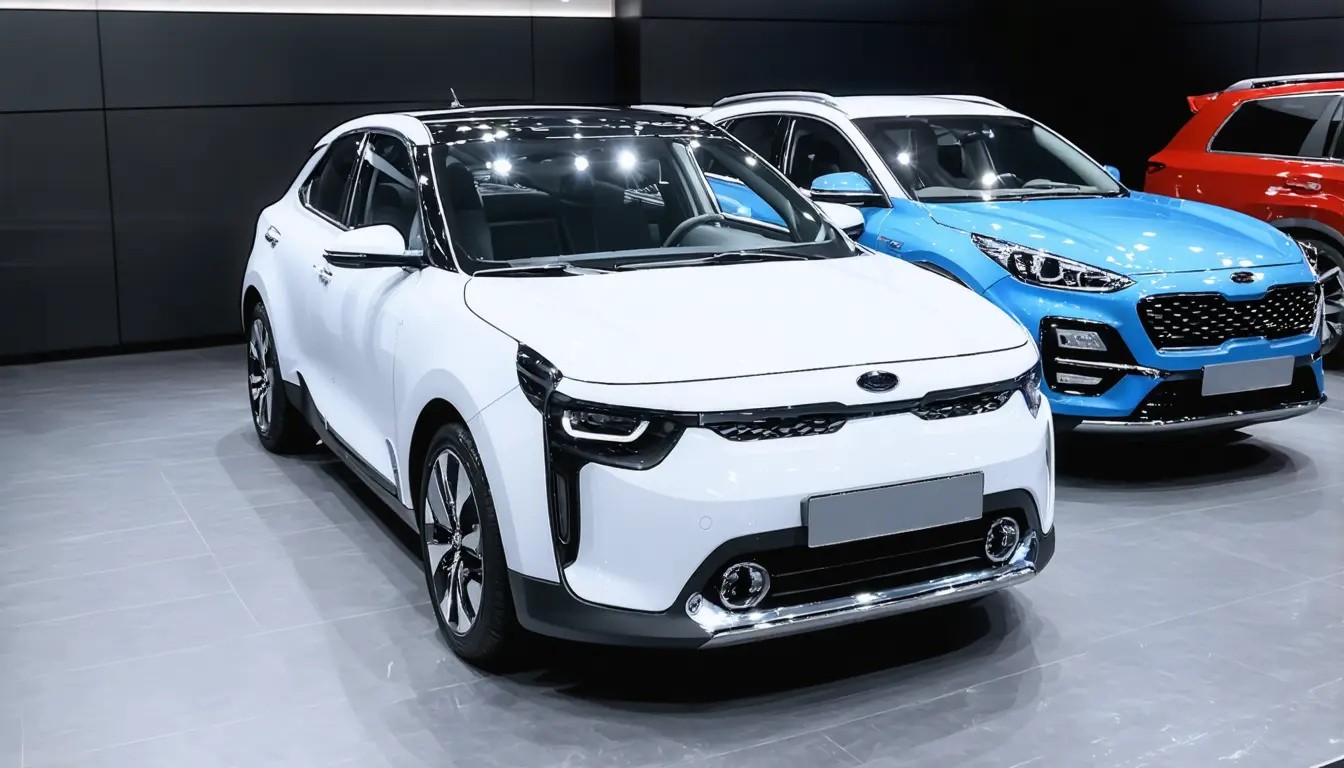Overview of Tata Motors Cars in India
Tata Motors has undergone a phenomenal transformation over the last decade, evolving from a manufacturer known primarily for practical and budget-friendly vehicles to a brand that now stands shoulder to shoulder with leading global automakers. Once recognized for models like the Nano and Sumo, Tata Motors has redefined its identity by producing cars that prioritize safety, design sophistication, and advanced technology. By 2025, the company’s lineup reflects this transformation, offering vehicles that cater to diverse consumer needs, from compact hatchbacks to feature-rich SUVs. Popular models such as the Tiago, Altroz, Punch, Nexon, Harrier, and Safari have helped Tata Motors become a symbol of reliability and trust in India’s fast-growing passenger car market. The company’s commitment to safety has been widely acknowledged, with several of its models earning top Global NCAP ratings. Moreover, Tata’s proactive approach to electric mobility — through models like the Nexon EV and Tiago EV — highlights its dedication to a cleaner, sustainable automotive future. With contemporary design, cutting-edge technology, and value-driven pricing, Tata Motors continues to dominate the Indian market with innovation and purpose.
Latest Tata Cars and Prices (2025)
Tata Motors’ 2025 lineup represents a perfect blend of affordability, style, and advanced engineering, catering to both urban commuters and long-distance travelers. The Tata Tiago remains one of India’s most dependable hatchbacks, offering petrol, CNG, and electric variants with manual and AMT transmission options. Priced between ₹5.6 lakh and ₹8.3 lakh ex-showroom, it’s a practical city car known for its safety and fuel efficiency. The Tata Altroz, positioned as a premium hatchback, features a solid build, a 5-star safety rating, and multiple fuel options, including petrol, diesel, and CNG. It’s available between ₹6.8 lakh and ₹10.8 lakh ex-showroom and delivers an exceptional balance of comfort and performance.
The Tata Punch has emerged as one of the country’s favorite compact SUVs, offering a muscular design, roomy interiors, and impressive ground clearance, with prices ranging from ₹6.5 lakh to ₹10.8 lakh. Meanwhile, the Tata Nexon, one of India’s best-selling SUVs, remains a game changer in its category. With petrol, diesel, and electric variants, the Nexon offers class-leading safety, cutting-edge design, and powerful engine options priced between ₹8.5 lakh and ₹15.5 lakh ex-showroom. For SUV lovers seeking size and performance, the Tata Harrier and Safari deliver a premium experience with their bold presence, diesel powertrains, and superior comfort. The Harrier starts at ₹16 lakh, while the Safari, offering six- and seven-seater configurations, begins around ₹17 lakh.
Though no longer in production, legacy models like the Nano and Sumo continue to hold nostalgic value in India’s automotive history. The Nano remains symbolic of affordable innovation, while the Sumo represents rugged dependability that served Indian roads for decades. These classics laid the foundation for Tata’s evolution into a manufacturer of world-class cars that combine safety, performance, and style.
Overview of Kia Cars in India
Kia Motors entered the Indian market in 2019 and has since become one of the most successful automobile brands in the country. Within a short span, Kia built a reputation for introducing cars that embody contemporary design, superior technology, and global quality standards. In 2025, Kia continues its upward trajectory with a versatile portfolio that includes the Sonet, Seltos, Carens, and Carnival, along with electric flagships like the EV6 and the soon-to-launch EV9. Each Kia model stands out for its futuristic appeal, refined interiors, and feature-packed design that caters especially to younger, urban customers.
Kia’s strategy focuses on blending luxury with practicality, ensuring that even its compact models feel premium. The brand has also set new benchmarks in digital connectivity, infotainment, and safety features. Its electric vehicles, in particular, have positioned Kia as a forward-thinking automaker ready for India’s next automotive era. With elegant design language, competitive pricing, and advanced features, Kia continues to be a favorite among drivers who appreciate both aesthetics and performance.
Latest Kia Cars and Prices (2025)
Kia’s 2025 lineup in India exemplifies a fusion of technology, comfort, and versatility. The Kia Sonet remains a stylish compact SUV offering petrol and diesel engine options, along with multiple transmission choices including manual, iMT, and DCT. Priced between ₹7.9 lakh and ₹14.9 lakh ex-showroom, it is a feature-rich choice for buyers seeking a small SUV with premium appeal. The Kia Seltos, one of the brand’s most popular models, combines sophistication and reliability with engine options that include petrol, diesel, and turbo variants. With prices ranging from ₹10.9 lakh to ₹20 lakh ex-showroom, it continues to be one of the most preferred mid-size SUVs in India.
For families, the Kia Carens stands out as a 6- or 7-seater MPV that delivers unmatched comfort and practicality. Available between ₹10.5 lakh and ₹19 lakh ex-showroom, the Carens offers a plush interior and advanced connectivity features, making it ideal for long journeys. The Kia Carnival serves as the flagship MPV, offering luxury comparable to international models, with prices ranging from ₹26 lakh to ₹35 lakh. In the electric space, Kia’s EV6 has set a new standard for premium electric mobility, offering long range, fast-charging capabilities, and modern design for a price range of ₹60–65 lakh. The upcoming EV9 takes things a step further, redefining the brand’s EV identity as a futuristic 7-seater SUV expected to cost between ₹75 lakh and ₹85 lakh ex-showroom. Together, these models position Kia as a strong contender across every major automotive segment in India.
Comparison: Tata Motors vs Kia
Tata Motors and Kia cater to distinctly different consumer preferences, yet both deliver exceptional value in their respective domains. Tata’s cars are known for their robust build quality, Indian engineering sensibilities, and unbeatable safety ratings, with many models achieving 5-star GNCAP certifications. Kia, on the other hand, brings a global touch with futuristic styling, advanced infotainment systems, and premium interiors that appeal to a younger demographic. Tata’s vehicles, priced between ₹5.6 lakh and ₹30 lakh, emphasize practicality and affordability, while Kia’s range extends from ₹7.9 lakh to ₹90 lakh, highlighting its presence in both mass-market and luxury segments.
Tata offers petrol, diesel, CNG, and electric variants, focusing on sustainability and long-term durability. Kia, meanwhile, prioritizes refinement and driving comfort with a strong lineup of turbocharged petrol, diesel, and electric engines. Tata’s muscular and distinctly Indian design language resonates well with family and utility-focused buyers, whereas Kia’s sleek, globally-inspired aesthetics attract those seeking sophistication and technology-driven experiences. Ultimately, Tata shines in reliability, safety, and low maintenance, while Kia impresses with its luxury finishes, performance, and tech innovation.
Features, Engine, and Mileage Insights
Both Tata and Kia deliver a strong combination of performance and efficiency across their lineups. Tata’s Nexon offers both petrol and diesel options, delivering mileage between 17 and 24 km/l, while the Punch’s 1.2L petrol engine achieves around 18 to 21 km/l. The Altroz and Tiago add diversity to Tata’s small car segment with efficient engines and CNG options. Kia’s Sonet, with its 1.0L turbo petrol and 1.5L diesel options, offers between 18 and 22 km/l, while the Seltos provides a balance of power and refinement, returning 16 to 20 km/l depending on engine type. The Carens maintains efficiency around 17 to 19 km/l with its turbo-petrol configuration. Tata’s Harrier delivers a fuel economy of 15 to 18 km/l from its 2.0L diesel engine. While Tata emphasizes rugged reliability and long-lasting performance, Kia focuses on smoother driving dynamics and advanced transmission systems like DCT and CVT, ensuring a refined experience on every drive.
Tata Motors Commercial Vehicles and Truck Prices
Tata Motors continues to dominate India’s commercial vehicle market with a diverse range of models tailored for logistics, transport, and construction. The Tata Ace Gold, often referred to as the “Chhota Haathi,” remains a trusted choice for small business owners with prices starting around ₹4.8 lakh. The Tata 407, a legend in light commercial trucking, begins near ₹10 lakh and continues to be the workhorse of India’s transportation network. The Tata Ultra Series, starting around ₹15 lakh, caters to medium-duty operations, offering a blend of performance and payload efficiency. At the heavy-duty end, the Tata Signa and Prima Series, priced between ₹30 lakh and ₹55 lakh, exemplify Tata’s leadership in heavy transport solutions. The brand’s reputation for reliability, service availability, and rugged engineering has made it the first choice for fleet owners and logistics companies nationwide.
Kia Electric Cars and EV Lineup
Kia’s commitment to electric mobility is reflected in its growing EV portfolio for 2025. The EV6 continues to impress with its futuristic styling, advanced safety features, and long driving range, supported by ultra-fast charging capabilities that set new benchmarks in the Indian EV segment. The upcoming EV9 takes this progress further, introducing a spacious 7-seater electric SUV that merges luxury with sustainability. Kia’s focus extends beyond premium EVs — the company is also planning to launch more affordable electric models in India to compete directly with Tata’s strong EV presence. These developments underline Kia’s mission to become a major player in India’s green mobility revolution, complementing its reputation for style and innovation.
Tata Motors Share Price and Market Position
Tata Motors’ strong presence across passenger and commercial segments has significantly boosted its market value and investor confidence. The company’s stock performance reflects steady growth fueled by increasing sales in both domestic and export markets. The success of its EV lineup, including the Nexon EV and Tiago EV, has played a pivotal role in driving investor optimism and reinforcing Tata’s leadership in electric mobility. Furthermore, the company’s continuous innovation and strategic focus on sustainability have positioned Tata Motors as one of India’s most valuable automotive brands in 2025. With rising profitability, expanding exports, and a diversified portfolio, Tata remains a favorite among both consumers and shareholders.
Buying Guide – Which Brand Should You Choose
Choosing between Tata Motors and Kia ultimately depends on your lifestyle and preferences. Tata is the go-to option for those prioritizing safety, durability, and value. Its wide range of petrol, diesel, CNG, and electric cars caters to practical buyers who want a balance between affordability and peace of mind. The brand’s extensive service network across India makes ownership convenient, especially in smaller towns. Kia, in contrast, is ideal for those who desire modern design, refined interiors, and advanced technology. Whether it’s the turbo-petrol performance of the Seltos or the futuristic appeal of the EV6, Kia’s lineup is designed to impress drivers looking for a premium experience. While Tata appeals to sensible, safety-conscious buyers, Kia resonates with those seeking international flair and sophistication.
Ownership, Insurance, and Maintenance Costs
When it comes to ownership, both Tata and Kia offer comprehensive service and warranty programs, though their maintenance costs differ slightly. Tata cars generally have lower insurance and maintenance expenses, with annual premiums ranging from ₹10,000 to ₹25,000 and maintenance for hatchbacks costing around ₹4,000–₹6,000 per year. Larger SUVs like the Harrier and Safari typically cost between ₹8,000 and ₹12,000 annually to maintain. Kia’s premium positioning means slightly higher costs, with insurance plans ranging from ₹15,000 to ₹35,000 annually and maintenance expenses averaging ₹6,000–₹15,000 depending on the model. Both brands collaborate with leading digital insurance providers such as Acko and other online platforms, allowing customers to compare premiums and choose flexible coverage. With extended warranties and service packages, both Tata and Kia ensure long-term reliability and customer satisfaction.
Pros & Cons of Tata Motors and Kia Cars
Tata Motors’ biggest strengths lie in its 5-star safety ratings, robust design, and affordability. The brand has earned a loyal following for offering strong, reliable vehicles at competitive prices, complemented by a wide after-sales network. However, some entry-level variants can feel basic in cabin finish, and the number of petrol automatics is still limited compared to rivals. Kia’s strengths include its premium interiors, cutting-edge technology, and refined driving experience. Its SUVs and MPVs deliver excellent comfort and high-quality features. The drawbacks are slightly higher maintenance costs and fewer budget-friendly models below ₹7 lakh. Despite these differences, both brands offer outstanding quality and cater to distinct consumer needs, making them two of the most trusted names in the Indian auto industry today.
Final Verdict – Tata vs Kia in 2025
In 2025, Tata Motors and Kia continue to represent two sides of India’s evolving automotive landscape. Tata Motors stands for safety, affordability, and innovation, catering to practical Indian buyers who want dependable vehicles that offer long-term value. Models like the Tiago, Punch, and Nexon showcase Tata’s versatility and engineering excellence. On the other hand, Kia represents sophistication, global styling, and technology-driven comfort. The Seltos, Carens, and EV6 exemplify Kia’s modern, aspirational appeal. For those on a budget or seeking electric mobility, Tata remains an unbeatable choice, while Kia suits customers looking for luxury and advanced features. Both automakers embody quality, reliability, and forward-thinking design, ensuring Indian buyers can confidently choose either without compromise.
FAQs
Q1: What is the price of the Kia Seltos in India?
The Kia Seltos is priced between ₹10.9 lakh and ₹20 lakh ex-showroom in 2025, depending on the chosen variant and engine configuration.
Q2: What is the on-road price of the Tata Nexon?
The Tata Nexon’s on-road price starts at approximately ₹10 lakh and can go up to ₹18 lakh for the top-end variants.
Q3: Does Tata Motors manufacture commercial vehicles?
Yes, Tata Motors is India’s largest commercial vehicle producer, offering a wide range of trucks, vans, and buses that dominate the logistics and transport sectors.
Q4: What are the prices of Kia’s electric models EV6 and EV9?
The Kia EV6 is priced between ₹60 lakh and ₹65 lakh, while the premium 7-seater EV9 is expected to cost between ₹75 lakh and ₹85 lakh in India.
Q5: Which brand offers better safety — Tata or Kia?
Tata Motors leads in crash safety ratings with multiple 5-star models, while Kia provides advanced safety technology and robust build quality across its SUV range.













